TABLE OF CONTENTS
Can you put a PC on a carpet?
Why or why not, and what else should you be considering when choosing the placement of your PC?
I’ll be covering all of that in this article, starting with the most immediate question.
Can You Put a PC on a Carpet?
No.
Doing so will most likely serve to suffocate your PC’s intake (especially the PSU’s intake FAN at the bottom), exhaust, or both.
Additionally, carpet is notorious as a surface for building up and transferring static electricity- which is the last thing you want to get inside your PC since electrostatic discharge (ESD) can damage your components.
If you’re limited on desk or table space and your only available floor is a carpet, you may be a little concerned at this point.
Fortunately, you don’t need to do too much to make sure your PC is safe on a given surface.
What Your PC Needs in a Safe Surface
First, the main thing to understand is that as long as your PC has a flat, hard surface to rest on, you should be fine.
PC cases all have tiny “feet” which serve to elevate the bottom intake/exhaust and enable airflow throughout the chassis.
On carpet, this isn’t enough to free up airflow, as the untouched carpet will simply rise up into the case. But on any hard, flat surface, this construction will function as intended without any issue.
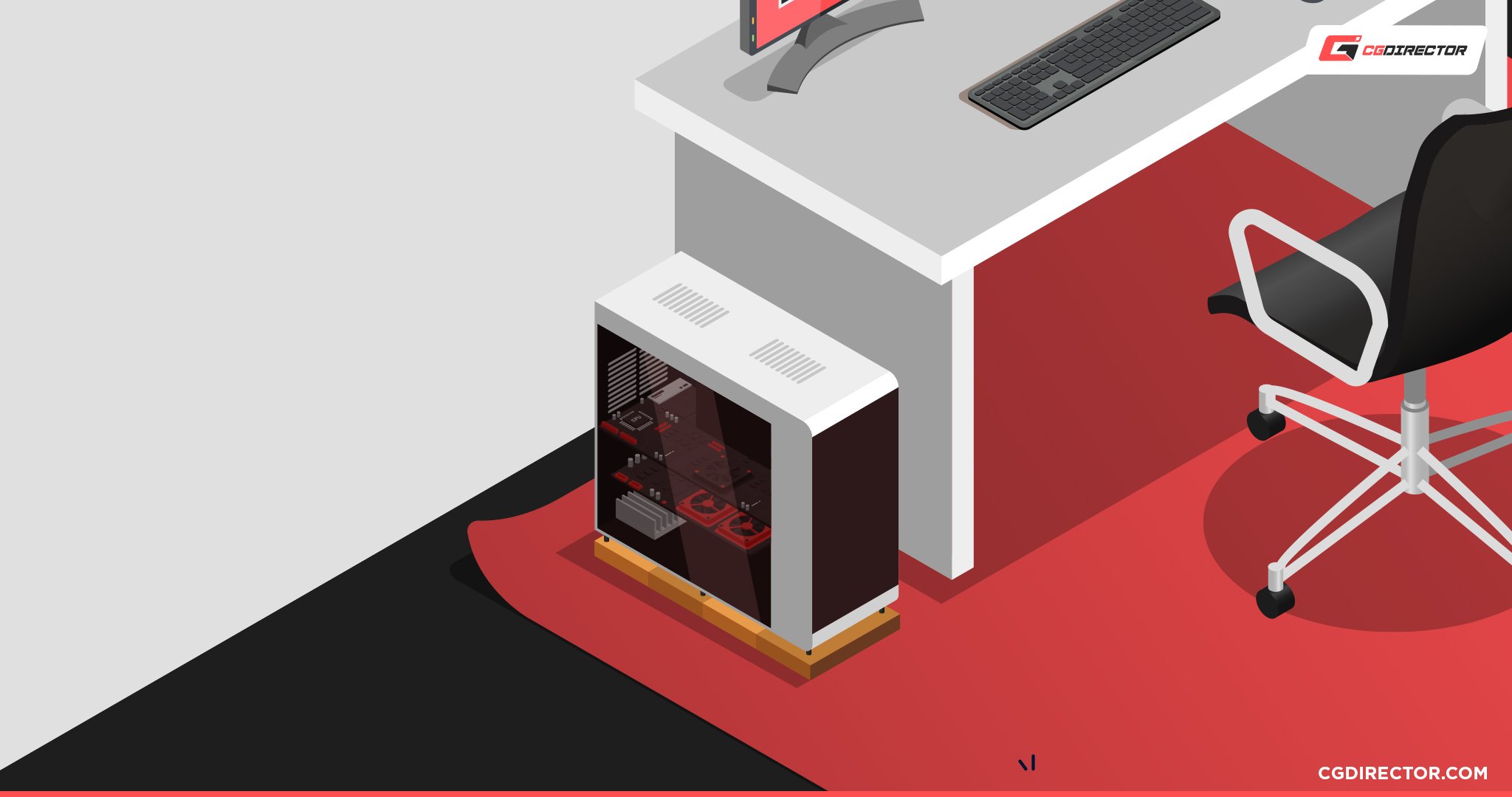
So, what do you use?
How To Identify, or Make, a Safe Surface
The most simple solution for most users, especially if you don’t have any extra chairs or nightstands or whathaveyou to stand your PC on, will be to take an appropriately-sized plank of wood and simply place your PC on top of that, and the plank of wood on top of your carpet.
You can still technically set down your PC on a carpeted floor as long as a hard, flat surface elevates it and prevents it from actually coming in contact with the said carpet.
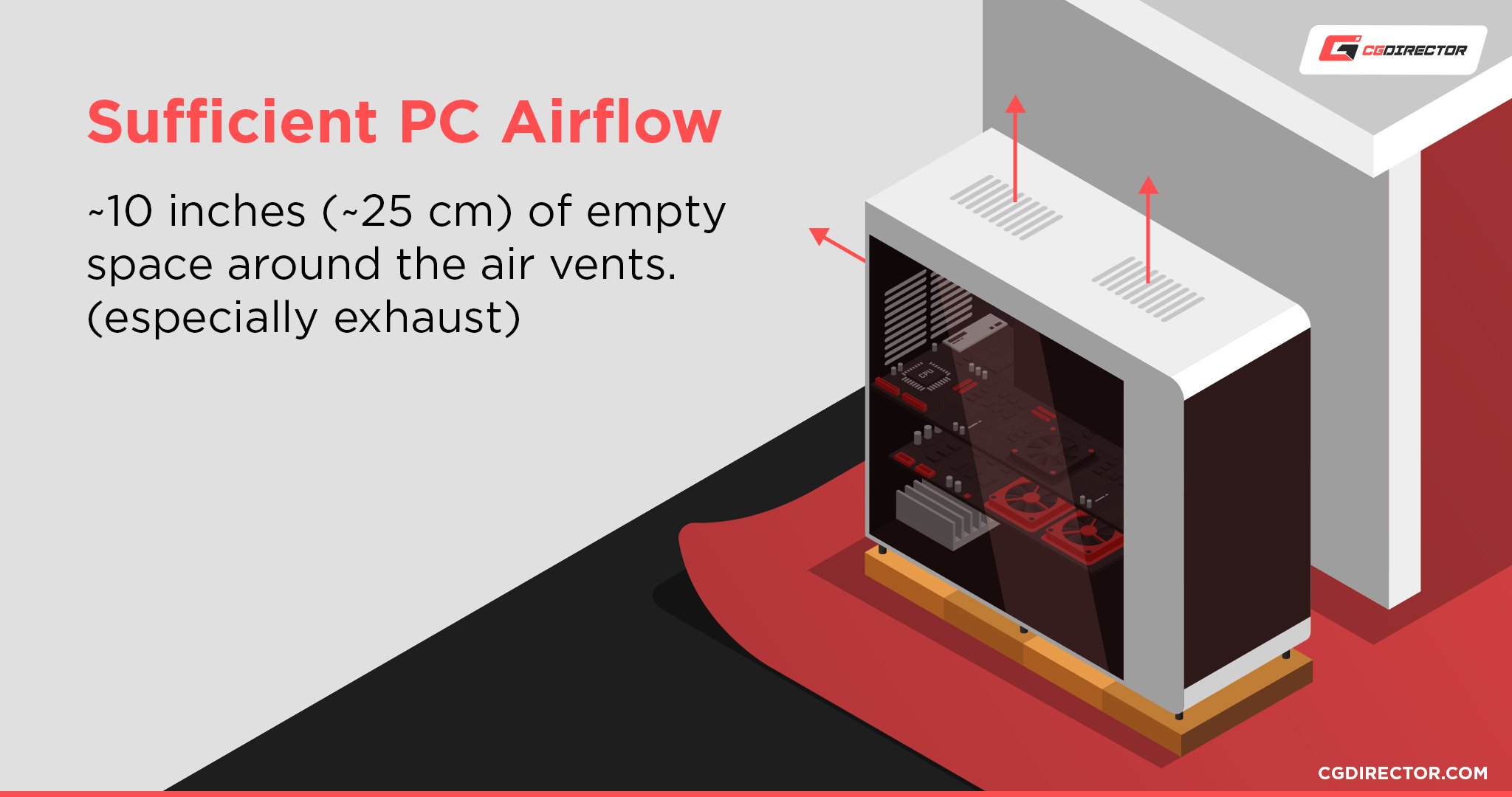
Besides making a carpet safer with wood, it’s worth noting that most other floor types, like marble, hardwood, or tile should all be perfectly fine for your PC. That’s because they all suit the “hard, flat surface” rule.
However, that doesn’t necessarily mean the floor should be the first place you choose to place your PC, especially if you happen to have hairy pets or kids or live in a particularly dusty climate.
Be sure that if you place your PC on a safe floor, you still check frequently for dust bunnies and potential debris (hair, dirt, etc) making its way inside your chassis.
Some other viable safe surfaces for your PC include:
- A folding metal/plastic chair
- A nightstand
- A clothes dresser
- Your Desk
- A sturdy shelf on your wall
- …pretty much any elevated, hard, flat, and sturdy surface.
Besides meeting your basic surface requirements, there are a few other things you may want to consider about the placement of your PC and its components. More on those below.
Other PC Placement Concerns
Airflow
A big potential issue with PC placement is placing it in such a way that airflow is inhibited, even if it’s on an otherwise-safe surface.
Like you, your PC needs space to breathe in and out without obstruction- but for cooling rather than oxygen. Even so, a PC that can’t breathe is pretty similar to a human that can’t breathe, in that it won’t last very long before something goes wrong.
Fortunately, this can pretty easily be avoided. Just make sure that your PC has at least a solid ~10 inches (~25 cm for my international readers) of clearance between itself and the nearest wall or corner.
As long as some basic rules of spacing are respected, you shouldn’t need to worry about the placement of your PC inhibiting your airflow- but it has been known to happen, especially if your exhaust is blocked off.
Cable Management/Routing
So, you’re going to end up thinking about this part anyway, as part of setting up your PC, to begin with.
You’ll want to be especially mindful of your cable management and routing if you have pets or young children, as both parties are likely to snag and tug on whatever may catch their interest.
Fine if that’s a toy, less so if it’s the cable running from your power supply to your wall.
To avoid issues like this, I strongly recommend keeping your PC on some kind of elevated surface, even if it isn’t your desk.
Something like a folding chair right next to your desk can make it much easier to route cables away from potential interference, and you may even opt for options like velcro straps/twist ties on your desk/monitor to further help with cable routing.
FAQ
How do I prevent thermal throttling?
Part of finding a proper place for your PC is preventing its airflow from being inhibited since this is a big cause of overheating and (by extension) thermal throttling.
However, just having your PC in the right place may not be enough to prevent thermal throttling, though it will definitely help.
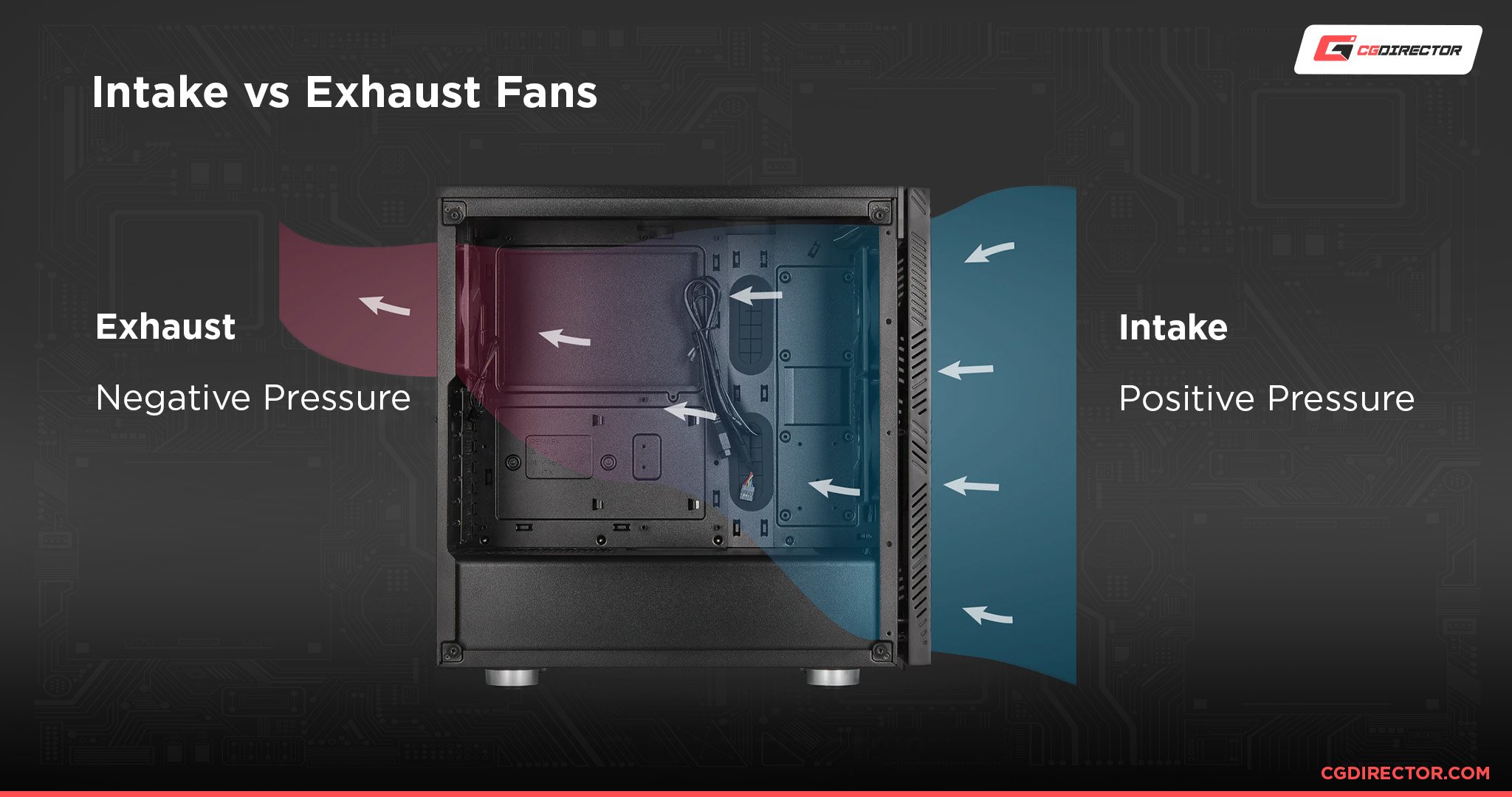
One of the most important things you can do to ensure your PC doesn’t thermal throttle is having a proper positive pressure configuration for your cooling setup.
This means at least 2 intake fans and 1 exhaust fan, always maintaining more air coming in than being pushed out.
This will enable positive air pressure, which pushes air through and out of your PC effectively- a negative pressure configuration, on the opposite end, will suck more dust into your PC.
There are plenty of other potential causes of thermal throttling, but that’s the big one to worry about, especially in the context of this airflow-related article.
For more on thermal throttling and a ton of other ways to alleviate or prevent it, peruse my Thermal Throttling Guide.
Where do I set down my PC during building or upgrading?
Basically, you just need to find a static-free environment in which to work and properly ground yourself to prevent any ESD inside your PC.
Floor-wise, yes, this means you want to avoid carpet if at all possible when opening up a PC- wooden, tiled, or stone surfaces should all be fine in comparison.
Over to You
That’s all, for now!
I hope that this article taught you what you needed to know about safe surfaces to place your PC on, and why bare carpet is definitely not the best choice.
Fortunately, as long as you’re cognizant of just a few airflow factors when finding a resting spot for your PC, you should be fine to place it pretty much wherever.
Just…don’t do it on carpet unless you have a thick and hard surface between the PC and the carpet. And definitely don’t open up your PC while your feet are still on a carpet.
Leave a comment below or in our forums if you have any other questions, or just want to talk about PC hardware with a community of experts, professionals, and enthusiasts like you!
![Can you put a PC on a carpet? [Don’t do this!] Can you put a PC on a carpet? [Don’t do this!]](https://www.cgdirector.com/wp-content/uploads/media/2022/05/Can-You-Put-a-PC-on-a-Carpet-Safe-Surfaces-For-Your-PC-Twitter-1200x675.jpg)
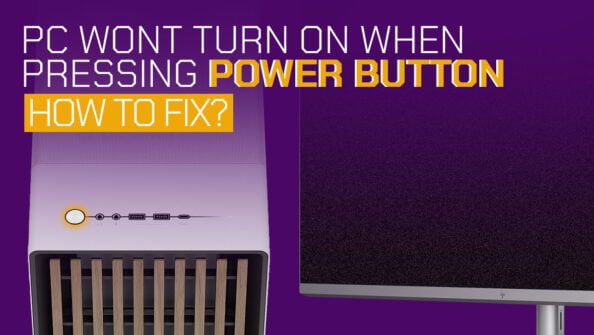
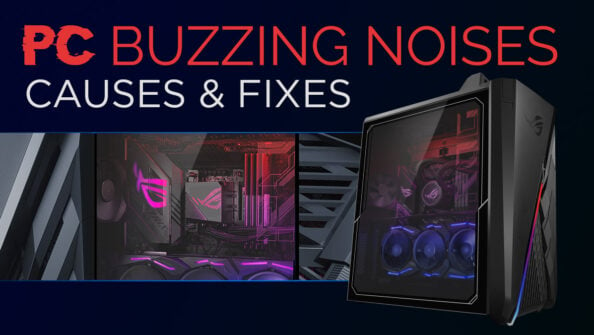
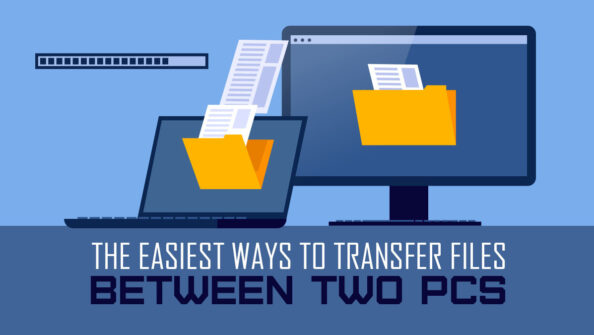
![The Best Time to buy Computer Parts [Updated] The Best Time to buy Computer Parts [Updated]](https://www.cgdirector.com/wp-content/uploads/media/2019/10/Best_time_to_buy_PC_parts_Twitter-1200x675-594x335.jpg)

0 Comments